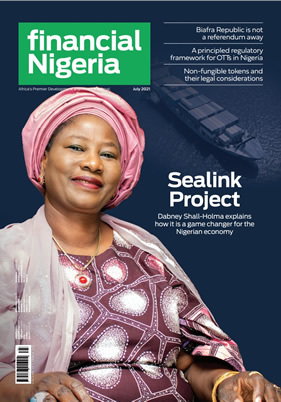Latest News
IMF lowers global growth forecast for 2023

News Highlight
Sub Saharan Africa is projected to grow at 3.6% in 2023 and 4.2% in 2024. Nigeria is projected to grow slightly below the regional average at 3.2% in 2023 and 3.0% in 2024.
The IMF announced on Tuesday that the baseline forecast for global output growth is 0.1 percentage point lower than predicted in the January 2023 World Economic Outlook (WEO) Update, before rising to 3.0 percent in 2024.
“The world economy is still recovering from the unprecedented upheavals of the last three years, and the recent banking turmoil has increased uncertainties,” said Pierre-Olivier Gourinchas, the IMF’s Chief Economist, during the press conference for the release of the update report. “We expect global output growth to fall from 3.4% last year to 2.8% in 2023, before rising to 3% in 2024, mostly unchanged from our January projections.”
He said advanced economies are expected to see an especially pronounced growth slowdown from 2.7% in 2022 to 1.3% in 2023. Global headline inflation is set to fall from 8.7% in 2022 to 7% in 2023 on the back of lower commodity prices but underlying core inflation is proving to be stickier. Importantly, this outlook assumes that recent financial stresses remain contained.
According to IMF’s WEO April 2023, the U.S. GDP will grow by 1.6% in 2023 and growth is projected to fall to 1.1% in 2024. Euro Area growth will be 0.8% in 2023 and rise to 1.4% in 2024. A negative growth of -0.3% is projected for the UK this year before growth turns positive at 1.0% next year.
Growth in Emerging Market and Developing Economies is projected at 3.9% in 2023 and 4.2% in 2024. China and India are projected to outperform this forecast, with the former projected to grow at 5.2% in 2023 and 4.5% in 2024, while the latter is expected to post 5.9% and 6.3% growth rates in 2023 and 2024 respectively.
Sub Saharan Africa is projected to grow at 3.6% in 2023 and 4.2% in 2024. Nigeria is projected to grow slightly below the regional average at 3.2% in 2023 and 3.0% in 2024.
Much uncertainty clouds the short- and medium-term outlook as the global economy adjusts to the shocks of 2020–22 and the recent financial sector turmoil. Recession concerns have gained prominence, while worries about stubbornly high inflation persist.
“Once again, risks are heavily tilted to the downside, they have risen with the recent financial turmoil. Most prominently, recent banking system turbulence could result in a sharper and more persistent tightening of global financial conditions. The simultaneous rate hikes across countries could have more contractionary effects than expected, especially as debt levels are at historical highs. There might be a need for more monetary tightening if inflation remains stickier than expected. These risks and more could all materialize at a time when policymakers face much more limited policy space to offset negative shocks, especially in low-income countries,” added Gourinchas.
With the fog around current and prospective economic conditions thickening, policymakers have a narrow path to walk towards restoring price stability while avoiding a recession and maintaining financial stability. Achieving strong, sustainable, and inclusive growth will require policymakers to stay agile and be ready to adjust as information becomes available.
“First, as long as financial stress is not systemic as it is now, the fight against inflation should remain the priority for central banks. Second, to safeguard financial stability, central banks should use separate tools and communicate their objectives clearly to avoid unwarranted volatility. Financial policies should remain laser focused on preserving financial stability and watch for any buildup of risks in banks, non-banks, and the real estate sectors. Third, in many countries fiscal policy should tighten to ease inflation pressures, restore debt sustainability, and rebuild fiscal buffers. Finally, in the event of capital outflows that raise financial stability risks, emerging market and developing economies should use the integrated Policy framework, combining temporary targeted foreign exchange interventions and capital flow measures where appropriate,” said Gourinchas.
Related News
Latest Blogs
- Redefining wealth beyond numbers
- Nigeria’s WCO chairmanship as opportunity for trade facilitation
- Lessons of Lekki massacre for Nigerian business leaders
- AI solutions for improved poultry and fish production
- Between strong labour union and weak industry
Most Popular News
- NDIC pledges support towards financial system stability
- Artificial intelligence can help to reduce youth unemployment in Africa – ...
- Italy’s largest union brings 200,000 to Rome for work, democracy protest
- AFC-backed Infinity Power achieves financial close on 200MW wind farm
- Women innovation, entrepreneurship conference sets to hold in Cape Town
- George Elombi takes over as Afreximbank’s fourth President








